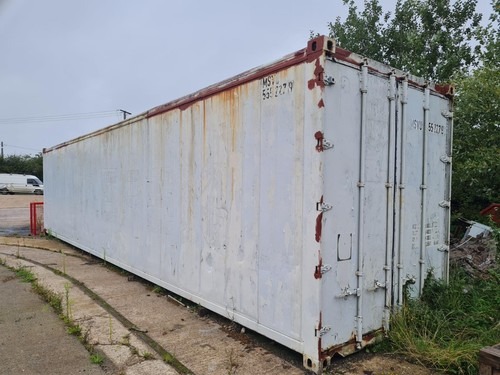Shipping Container Dimensions Explained In Less Than 140 Characters
Understanding Shipping Container Dimensions: A Comprehensive Guide
In today's globalized economy, shipping containers play a crucial role in the transport and storage of goods. Understanding their dimensions can be essential for companies involved in logistics, trade, and transport. This post will explore the different shipping container dimensions, their types, and the crucial aspects to consider when picking a container for your requirements.
What is a Shipping Container?
A shipping container is a large standardized box created for the effective transportation of cargo, generally by ship, truck, or rail. These containers are manufactured to assist in worldwide trade and streamline the shipping process. They come in basic sizes to ensure compatibility across shipping lines and modes of transport.
Requirement Shipping Container Dimensions
Shipping containers can be found in various sizes, with the most typical dimensions being 20-foot and 40-foot containers. Below is a table detailing the standard dimensions for these container types:
Container Type
Length (Feet)
Width (Feet)
Height (Feet)
Volume (Cubic Feet)
Weight Limit (Tons)
20ft Standard
20
8
8.5
1,172
22
40ft Standard
40
8
8.5
2,390
28
40ft High Cube
40
8
9.5
2,694
28
45ft High Cube
45
8
9.5
3,040
30
20ft Refrigerated
20
8
8.5
1,172
22
40ft Refrigerated
40
8
8.5
2,390
28
Types of Shipping Containers
Standard Containers: These are the most typical and cost-efficient alternative for shipping non-perishable items.
High Cube Containers: An extra foot taller than basic containers, these are ideal for transferring large products that require additional vertical area.
Refrigerated Containers (Reefers): Perfect for disposable items, these containers keep a regulated temperature during transport.
Open Top Containers: These containers have no top, permitting for simple loading of tall cargo; they often come with a tarpaulin cover.
Flat Rack Containers: Used for heavy and extra-large cargo, these containers do not have sides or a roofing, making them versatile for distinct shapes and sizes.
Tank Containers: Specifically designed for transporting liquids, these containers are built to hold a range of substances, including chemicals and food-grade liquids.
Elements to Consider When Choosing Container Dimensions
When figuring out which shipping container dimensions best fit your needs, think about the list below elements:
Type of Cargo: The dimensions required will depend on the type and size of items you wish to transport. Heavy or extra-large items might demand a flat rack or open top container.
Weight Capacity: It's necessary to make sure that the container can support the weight of the cargo without going beyond legal weight limitations.
Volume and Space: Assess just how much space is required for the products and if the dimensions chosen would provide sufficient room without leaving unneeded void.
Transport Mode: Different modes of transport may have limitations on container sizes, so this aspect must be taken into consideration when planning shipments.
Regularly Asked Questions (FAQs)
1. What are the most frequently used shipping container sizes?
The most commonly used shipping container sizes are the 20-foot and 40-foot containers. The 40-foot high cube container is also popular for those needing extra vertical space.
2. How much weight can a standard 20-foot container hold?
A basic 20-foot container can typically hold up to 22 tons or 44,000 pounds of cargo.
3. What is the distinction between basic and high cube containers?
The main distinction is height; high cube containers are an additional foot taller, offering more vertical space for cargo.
4. Can shipping containers be modified?
Yes, shipping containers can be modified for numerous uses, including producing portable workplaces, residential areas, or specialized storage solutions for particular kinds of items.
5. Are shipping containers water resistant?
Yes, shipping containers are developed to be weatherproof, however they can still go through use with time. Appropriate upkeep is crucial to ensure their durability and stability.
Comprehending shipping container dimensions and types is important for services and people associated with shipping and logistics. By picking Shipping Container Business , one can enhance area, make sure safety, and efficiently satisfy legal requirements related to weight and dimensions.
Whether you're a seasoned logistics expert or just beginning, having a thorough grasp of shipping container dimensions will assist streamline your shipping processes, alleviate risks, and increase efficiency. By being educated, services can prevent common mistakes and browse the intricacies of transport more quickly.
